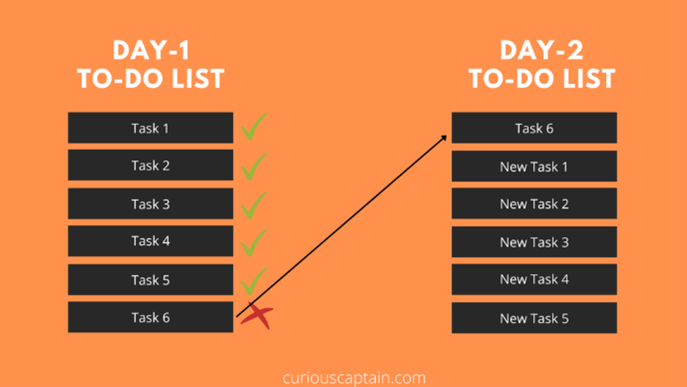Many people struggle with setting and enforcing boundaries. It requires knowing their preferences and breaking points. It means being willing to assert their desires and needs. This is hard for many people, either due to their upbringing or personality—or both.
There are many advantages that come with getting good at this. For example, it can help us protect our emotional wellbeing, grow as a person, develop greater self-respect and confidence, protect our time and energy, avoid burnout, earn respect from others, and prevent unnecessary relationship conflicts.
When we set boundaries, we’re helping others interact more effectively with us. Sometimes we’re setting lines for ourselves that we resolve not to cross. We’re getting clear on what we’ll accept or tolerate.
Boundaries help us function effectively. They allow us to enjoy our life and work while also giving us a sense of control over our lives.
When we don’t set and enforce boundaries properly and consistently, we’re more prone to anxiety, frustration, and resentment. We get overcommitted, perhaps falling into overwork, workaholism, exhaustion, or burnout.
How to Get Better at Setting Boundaries: 14 Proven Practices
Thankfully, there are many things we can do to get better at this. Here are 14 proven practices for setting and enforcing boundaries:
1. Recognize that setting and maintaining boundaries can benefit our lives greatly, including our work and our leadership. Given all the benefits, it’s well worth the effort. Also, it gets easier over time.
2. Realize that setting and enforcing boundaries is not just good for us but for everyone involved. Why? Because it creates clarity and generates mutual respect.
3. Avoid falling into the trap of overestimating the resistance that will come from setting boundaries. Our brains are good at generating fear and anticipating worst-case scenarios. Often, the reality is not nearly as bad as we fear when we get into worrying mode.
4. Stay focused on the higher purpose of setting boundaries instead of the down-side of the temporary awkwardness. When we set boundaries, it’s usually for a good and important reason such as protecting our wellbeing or reserving our time for our top priorities. In this light, it’s well worth a little temporary pain or awkwardness.
5. Evaluate our current boundaries to identify areas that need improvement. In particular, look for situations that often result in discomfort or resentment.
6. Take an inventory of boundary crossings that have happened. Thinking about these instances, focus especially on the people, the situations, and how they make us feel.
7. Determine new boundaries that we want to set and recommit to or update old boundaries. Our core values and current goals and priorities should inform these decisions. If we’re new to setting boundaries or have struggled with it in the past, we’re wise to start small and build out from there.
8. Communicate boundaries clearly. Sometimes, the problem is that we’re expecting people to read our minds and just know our boundaries. It’s a recipe for frustration and failure. Sometimes, we may want to explain our rationale so the person has context (e.g., “I’m fully booked now so I can’t help with that”). In other cases, we can leave it with a declaratory statement (“I can’t take that on”) or even just a simple “No.”

“No is a complete sentence.”
-Anne Lamott, writer
9. Be consistent in communicating and enforcing boundaries. This is key. It’s where the rubber meets the road. Without consistency, others are likely to get confused or forget, and that may take us back to square one. Better to do the hard work upfront and in the early stages until things start to take on a life of their own.
10. Develop our assertiveness, including getting better at saying “no” and saying it more often. We can focus on saying no to requests and opportunities that don’t align with our values or advance our priorities. We can avoid spending time with negative people who drag us down with their criticism, complaints, neediness, or narcissism. And we can decline opportunities or requests, so we don’t end up doing all the work ourselves (versus delegating things to others).
“The difference between successful people and really successful people
is that really successful people say ‘no’ to almost everything.”
-Warren Buffett, chair and CEO, Berkshire Hathaway
11. Be kind but firm. Ideally, we come across as thoughtful and considerate while still assertive and clear. Sometimes, a little humor helps.
12. Get clear about who we are, what we value, and how we work best. When we’ve done this inner work, it allows us to set and enforce boundaries.
13. Set boundaries on our work time. For example, we can set a maximum number of hours we’ll work each week. We can limit email to certain hours, with rare exceptions only as needed. It helps to plan ahead—and be sure to identify and focus on our most important tasks.
14. Place boundaries around our emotional commitment to others. Boundaries aren’t just about our time. They’re also about the focus of our attention and emotions. It’s a trap to feel responsible for other people’s choices or their happiness or outcomes.
Conclusion
Of course, setting and enforcing boundaries isn’t a one-and-done deal. It’s an ongoing process that requires reflection and course corrections. As we proceed with it, we must keep making judgments about when to be strict and when to make exceptions based on new information.
As we choose our boundaries, we should bear in mind that other people will make different choices about their boundaries. What works for us may not work for others. So, we should respect other people’s boundaries even as we fight for our own.
Also, it’s a mistake to think about boundaries only in the negative—only as things that we and others can’t do. Why? Because when we get good at setting and enforcing boundaries, it sets us up for all the positive things we actually want to do and experience. By setting limits, we gain freedom. We free up our time and energy to live life on our terms.
“Love yourself enough to set boundaries. Your time and energy are precious. You get to choose how you use it.
You teach people how to treat you by deciding what you will and won’t accept.”
-Anna Taylor, author
Tools for You
- Traps Test (Common Traps of Living) to help you identify what’s getting in the way of your happiness and quality of life
- Quality of Life Assessment to help you discover your strongest areas and the areas that need work and then act accordingly
- Leadership Derailers Assessment to help you identify what’s inhibiting your leadership effectiveness
Related & Articles Traps
- The Problem with Not Having Boundaries
- Focusing Too Much on Others’ Needs
- Caring Too Much About What Others Think
- People-Pleasing
- Perfectionism
- Burnout
- Workaholism
- Self-Doubt
- Lacking Clarity About What’s Most Important
Postscript: Inspirations on Boundaries
- “Half of the troubles of this life can be traced to saying yes too quickly and not saying no soon enough.” -Josh Billings, American humorist
- “Givers need to set limits because takers rarely do.” -Rachel Wolchin, author
+++++++++++++++++
Gregg Vanourek is a writer, teacher, and TEDx speaker on personal development and leadership. He is co-author of three books, including LIFE Entrepreneurs: Ordinary People Creating Extraordinary Lives (a manifesto for living with purpose and passion) and Triple Crown Leadership: Building Excellent, Ethical, and Enduring Organizations (a winner of the International Book Awards). Check out his Best Articles or get his monthly newsletter. If you found value in this article, please forward it to a friend. Every little bit helps!











